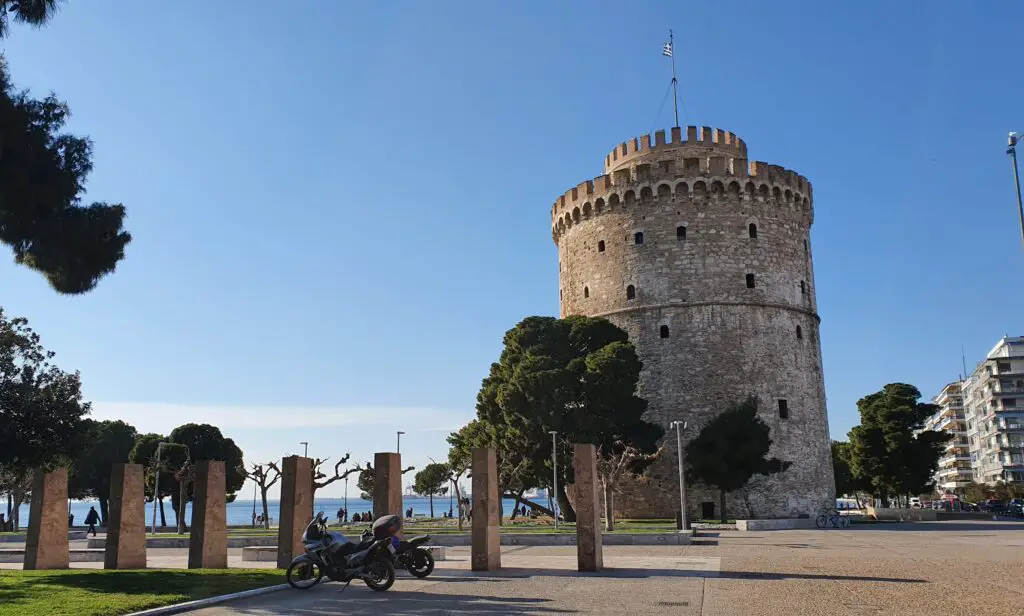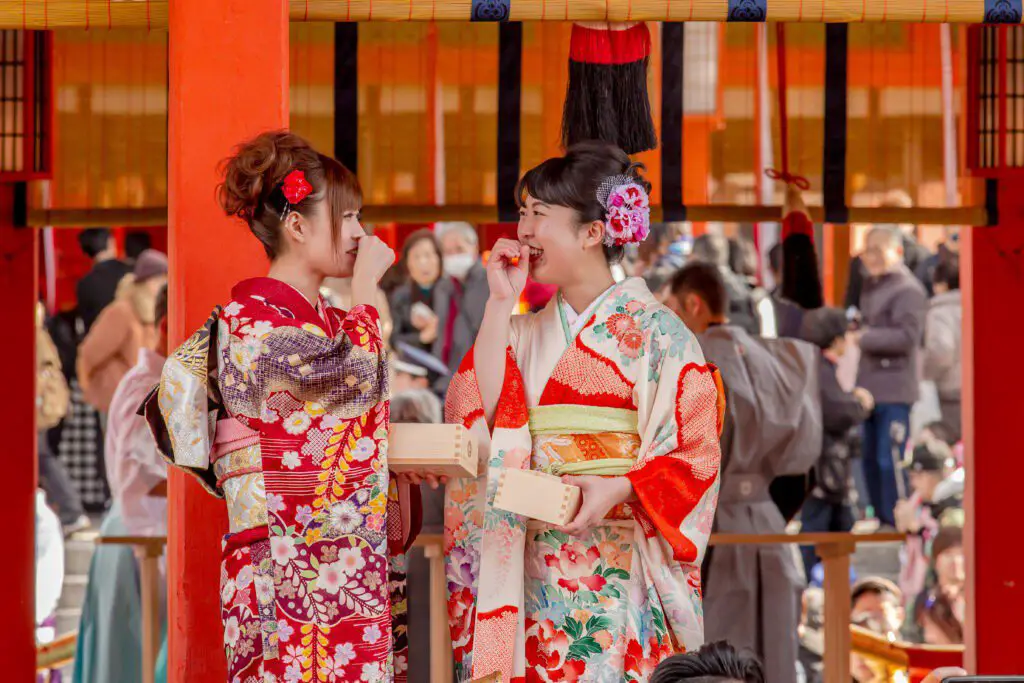Let’s face it, the main reasons you’re planning to visit Greece are probably related to the excellent weather, mouth-watering cuisine, and fascination with antiquity and Greek mythology. Maybe you even want to learn Modern Greek.
But there’s a whole other side of Greek history that commonly gets overlooked: The Ottoman Occupation.
After achieving Independence in 1832, many monuments built during the 400-year Ottoman rule were destroyed. But some remain, and provide a unique experience for any tour itinerary. In fact, some monuments, like the White Tower of Thessaloniki, are prominent local landmarks.
What makes Ottoman architecture so interesting is that, as an empire, the styles often adapted to local preferences, either due to the availability of materials or artistic integrity. Built in historic areas of villages or cities, these landmarks may also neighbor earlier, Byzantine structures.
Most monuments that remain, however, are forts–a boon for those who love outdoor travel.
So, without further ado, here are some of our top landmarks from Ottoman Greece you need to see.
- The White Tower of Thessaloniki (Λευκός Πύργος)
The White Tower is one of the best-known symbols of Thessaloniki and a landmark along the city’s waterfront, viewed as a symbol of the city’s liberation from Ottoman rule in 1912. It is connected to the city’s rich past, having been built once the Ottomans conquered the city back in 1430. It offers captivating views of the area, including the Thermaic Gulf.
Given its lengthy history, The White Tower has many names, including:
- The Lion Tower (Πύργος του Λέοντος)
- The Tower of Kalamaria (Φρούριο της Καλαμαριάς)
- The Tower of Janissaries (Πύργος των Γενιτσάρων)
- The Tower of Blood (Κανλί Κουλέ, Πύργος του Αίματος)
- Bastille of Thessaloniki
It gained its most recent name as part of an attempt by Sultan Abdul Hamid II to erase the tower’s bloody history, as the site had a long history of convict executions.
Today, the tower is home to a museum. The exhibition tells you about the history of Thessaloniki through different eras.
- Ano Poli ( Άνω Πόλης)
The Ano Poli (Upper Town) district of Thessaloniki is a neighborhood that preserves a timeless and authentic identity and is less than a 10-minute drive from the White Tower. As the highest point of the city, Ano Poli is built on the city’s acropolis and features Ottoman and Byzantine structures that are still intact, small stone-paved streets, old squares, and homes of famous poets.
The neighborhood also showcases historic hammams and bathhouses, many of which have been restored to their original glory. Visitors can also stroll around Pasha Gardens, a green park that has been adorned with unusual half-ruined Ottoman architecture.
Ano Poli is an ideal destination for a pleasant walk through ‘a different Thessaloniki,’ as it offers a calm and relaxed atmosphere. You won’t find any skyscrapers or busy shopping streets.
- Bezesteni Ottoman Market (Αγορά Μπεζεστένι)
The Bezesteni Ottoman Market in Thessaloniki is a small but thriving hub of shopping activity. This historic mall is a treasure trove of small shops offering textiles, jewelry, and flowers, as well as a variety of different foods.
It’s one of the city’s most significant Ottoman monuments and was built by Sultan Mehmed II (1455-1459). It is a multi-colored building that has remained intact for over 500 years and houses various stalls selling various goods.
During the Ottoman period, this market was used as a commercial center with luxurious textiles and silk. It was also a place of quality control and currency exchange. Additionally, it contains a loft that functions as an exhibition space. The building’s exterior shops are now turned into entertainment facilities, but they’re still very much in use as a market.
- Tuzci Hammam of Tuzcu Sinan Bey (Δίδυμα Λουτρά του Σινάν Μπέη Αλατά)
Close to an hour away from Thessaloniki is the northern city of Veria. Here, you can find one of the most impressive Ottoman structures in the area: The Twin Hammam of Tuzcu Sinan Bey. The Twin Hammam dates back to the 15th century and was divided into men’s and women’s bathhouses—thus the name.
What makes this bathhouse particularly interesting (and a must-visit) is the state-of-the-art technology, which was used for heating and cooling water, and providing hot showers.
It functions as a bathhouse until 1935, and today acts as a tourist attraction, along with several other key landmarks in the city. Veria itself contains a number of Byzantine churches and a historic Synagogue, as well as nearby outdoor attractions.
- Zintzirli Mosque (Ζινζιρλί Τζαμί)
There is a Zintzirli Mosque in Thessaloniki, but there’s also one in the nearby town of Serres, just an hour north of Thessaloniki.
Called “The Mosque of Chains,” this architectural masterpiece was built by the famous Ottoman architect Mimar Sinan over 500 years ago. It is a mid-sized mosque with a central quadrangle space surrounded by a two-story portico on three sides, east, north, and west.
But why chains? Its name was based on the chains that were used to hang the main chandelier from the roof, according to archeologist Stavroula Dadaki.
The building is now open for public non-religious use after a century of neglect and dereliction. It is a major milestone in the restoration of Greece’s Ottoman monuments. Other notable Ottoman sites that have been transformed into museums include the Fethiye Mosque in Athens, the Tzisdaraki Mosque in Rethymno, and the Aslan Pasha Mosque in Ioannina.
- Mehmet Ali House (Οικία Μεχμέτ Αλή Πασά)
A two-hour drive from Thessaloniki will bring you to Kavala, a city in Greek Macedonia. Here, you can visit the home of Mehmet Ali Pasha, the ruler of Egypt. This monument is currently owned by Egypt, offers a well-preserved, and is open to the public. This 18th-century home gives us a glimpse of the history of architecture in an era of mixed cultural and nationalist identities. Northern Greece was not only under the control of the Ottoman Empire, but it contained various ethnic groups, including Greeks, Albanians, and Macedonia.
This marvel of a mansion was built in 1769 and still stands today, with its quarters for men, pasha’s private room, and rooms for receiving guests.
Nearby you’ll also find a monument of Mehmet Ali Pasha, as well as a Church.
- Karababa Castle (Κάστρο Καράμπαμπα)
If you plan to visit the multiple attractions in Euboea, such as the Dragon Houses or the beaches in Kymi, you’ll need to pass through Chalkis. And here, you can find a 300-year-old Ottoman fortress.
This 17th-century fortress is perched on a hill in Chalkis’ coastal area. Karababa Castle is an Ottoman fortification, but its architecture is more European than Turkish, owing to its designer being a Venetian deserter, but it provides a nice view of the straits of Euripos and Chalkis.
The castle has multiple-sided towers, ramparts, and an interior church, and there are ancient traces of the city of Kanithos here. Its most fortified bastion is located on the east side, facing Chalkis, and two 19th-century Russian cannons are preserved in its crenulations.
- Kursum Mosque (Κουρσούμ Τζαμί)
One of the most prominent Ottoman tourist attractions in Greece is Trikala’s Kursum Mosque or the Leaden Mosque. Designed by the architect Sinan, it is the only surviving mosque from Ottoman Trikala and was named a World Heritage Site in 1998.
Today, the mosque serves as both a tourist attraction, open space, and venue for cultural events.
Its square prayer hall is topped with an 18-meter (59 ft) leaden semi-spherical, dome-giving the structure its name. It also features a portico, renovated in 1998, and an ashlar minaret.
This landmark also goes by another name—the Osman Shah Mosque. Legend has it that Osman Shah was cured of an illness while in Trikala and thus decided to build a mosque in thanks.
More on Ottoman Greece
The Ottoman reign in Greece remains an essential part of modern history that continues to affect the region today—for better or worse. These monuments give us some context to better understand Ottoman Greece, although their beauty and splendor are just a piece of the puzzle.
If you’re looking to learn more about Modern Greek history, Greek culture, and its relation to Ottoman Empire, here are some more resources I’d recommend:
- Greece: Biography of a Modern Nation
- The Greek Revolution: 1821 and the Making of Modern Europe
- Jewish Salonica: Between the Ottoman Empire and Modern Greece
- Athens from 1456 to 1920: The Town under Ottoman Rule and the 19th-Century Capital City
- The Intimate Life of an Ottoman Statesman, Melek Ahmed Pasha (1588-1662): As Portrayed in Evliya Celebi’s Book of Travels
- The Purchased Bride
- Renegade Women: Gender, Identity, and Boundaries in the Early Modern Mediterranean


